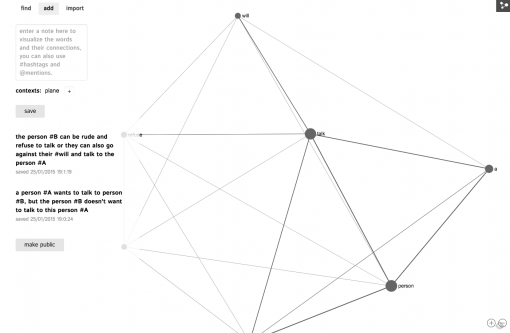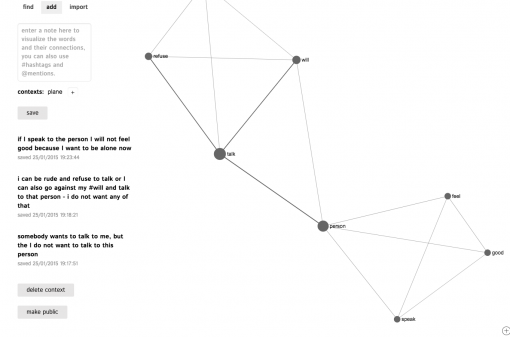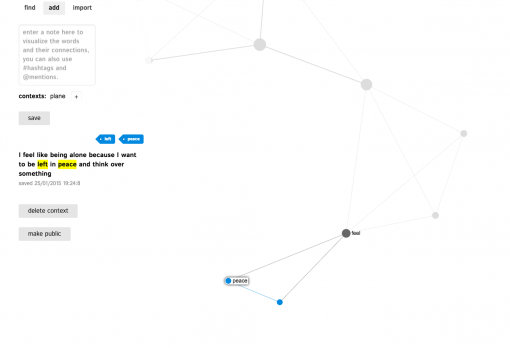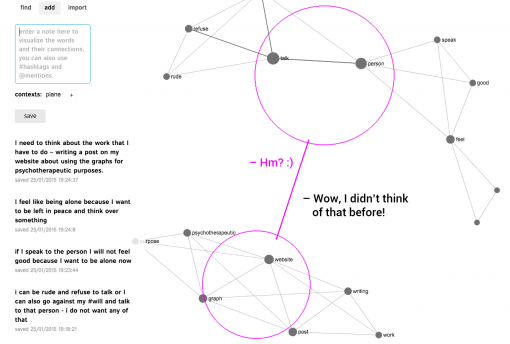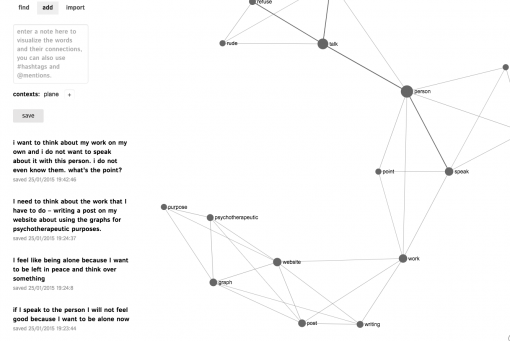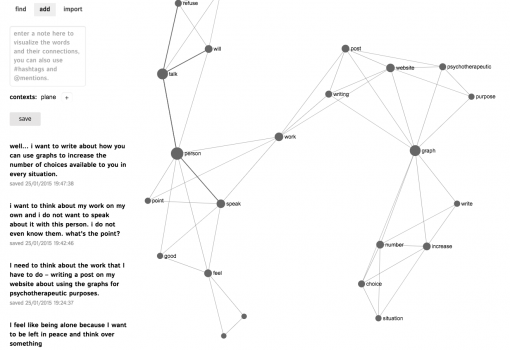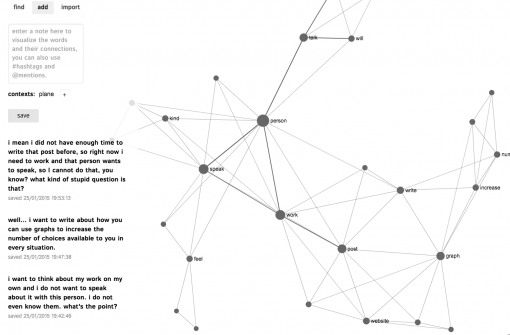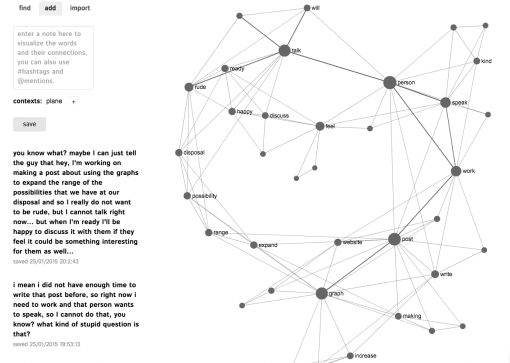Posted by Nodus Labs | January 25, 2015
Text Network Visualization for Psychotherapy
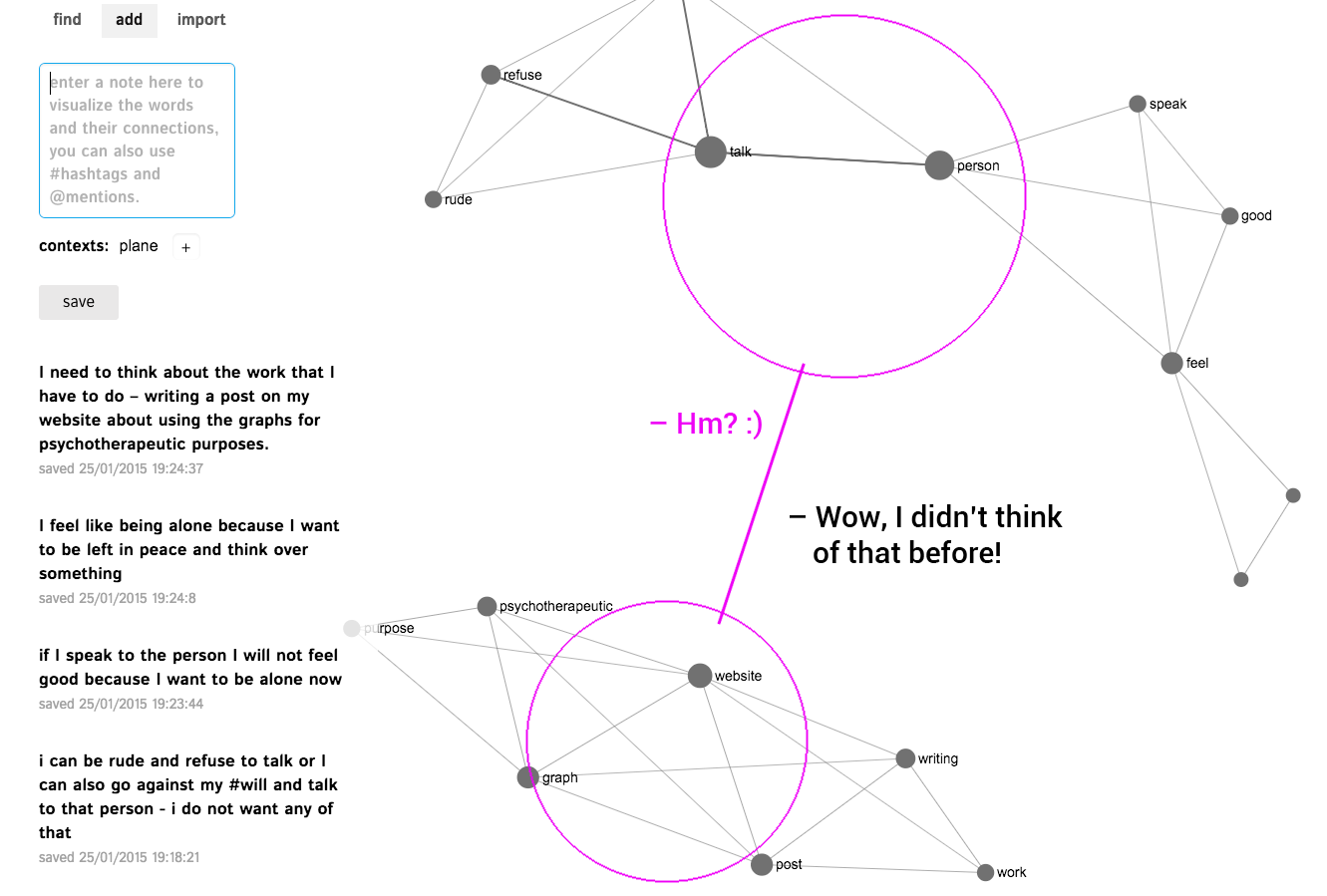
Mental disorders and various self-imposed psychological obstacles often arise because of the lack of choice. Gregory Bateson wrote about the double-bind origin of schizophrenic behavior where “crazy” reaction is simply a way of transcending a limiting situation, when the person sees no other choice. Various psychotherapeutic practices focus on expanding the range of possibilities for the patient, offering more choices than is currently available. Text network visualization can be a useful tool to aid this process. In this case study we are going to demonstrate how it works.
Step 1: Revealing the Inner Structure
We will use a simple and classical situation that describes the origin of so-called “crazy” behavior. Consider a person taking a long-haul flight who is sitting next to another passenger. The flight takes off and the passenger starts to speak – and it seems like he really wants to have a conversation. If at that moment the first person wants to be on their own or they are not in the mood for talking, there are only a few choices immediately available. The first choice is to refuse having a conversation – which may seem “rude”. The second choice is to give in and start talking – going “against one’s own will”. This is a classical double bind: both outcomes proposed by the situation are not really desirable. Therefore, according to Bateson [1], the intuitive choice to escape that unwanted situation quickly is to go “crazy”, which will put off the talkative stranger and will not be as rude as a blunt refusal (as true craziness is considered to be a sickness) and at the same time there won’t be a need to speak at all afterwards. This simple example shows how so-called crazy behavior arises from limited choices. We will now use text network visualization to find more possibilities based on the limited choices we have.
The initial situation can be represented like this:
It’s an interconnected graph of concepts, where everything makes perfect sense, because it relates to itself and to nothing else. The range of possibilities is very small, so is the range of possible responses. The challenge here is to help the patient expand the range of possibilities through careful questioning.
In order to uncover the underlying structure of this (and any) dilemma, two types of questions can be asked:
(a) directing the person towards exploring the periphery of the existing graph;
(b) zooming into the existing structure;
Questions that simply elicit a Yes / No response should be avoided as they will not provide any contribution to the graph.
Usually, the questions like “What will happen if…” or “What prevents you from…” are good to explore the periphery (a) and the questions like “How…” and “What specifically…” and “What for?” and “How do you mean that…” are good to zoom into the subject (b).
It’s good to avoid questions like “Why” as they simply reveal past causal logic: the patient will explain his own interpretation of the origin of his problems, which will already be reduced because of the limited possibilities available at the moment. A good way to avoid asking “Why” is to replace it with “How” and “What for”.
It is also a good practice to clarify words like “something”, “anything”, “sometimes”, “somewhere” by asking the patient to clarify their specificity: e.g. “something… – what specifically” or “somewhere – Where specifically?” or “always – What were those moments, specifically?” etc.
We can then ask a question: “What will happen if you speak to the person?” The answer may be as follows:
The next question can be: “What for do you want to be alone?”:
“Think over what specifically?”
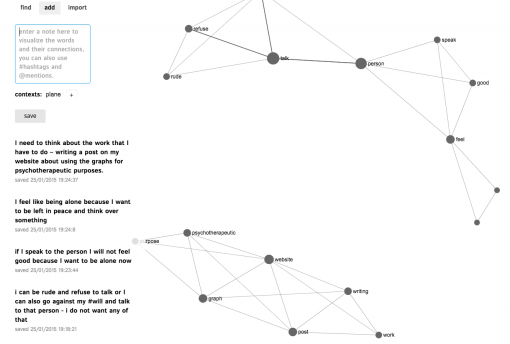
We now have two graphs.
This is the point that we can start bridging the gaps between the two structures proposed by the patient.
Step 2: Bridging the Gap
In our previous experimental studies [2] we found that seeing a graph of interconnected concepts produces a very special type of behavior where the person who’s watching the graph wants to make new connections, which usually bridge the gap between different clusters (topics) present within the text. If the text network graph represents the patient’s narrative, made in a close dialogue with the therapist, then such graph can also help bridge the gap between different fields of tension that produce problematic behavior. Those bridges between different topics will offer a new range of possibilities, which may, in turn, produce the space for the different new types of behaviors to emerge. This hypothesis is also confirmed by the various studies that were integrating visualization and self-observation in pain control therapy [3] [4]. It has also been shown that so-called “creative leaps” occur when one is bridging the gap between two different clusters within the network. [5]
Therefore, the next step is to ask the right question to bridge the gap between the two distinct clusters of nodes (or concerns of the patient). The general rule here is to just repeat the 2-3 main keywords from one cluster and then bridge them to the 2-3 words from another cluster with a joining clause or a proposition (offering a new possibility to bridge the gap and, thus, alleviate the tension).
For example: “You said that you wanted to write a post on your website about the graphs – do you think you could talk to this person about that to get some new ideas maybe?”.
Such question bridges the gap and offers a new possibility, which may already resolve the situation. The patient may see this chance encounter as an opportunity to actually discuss their work, instead of a hindrance to their creative process.
However, it is also possible that the patient says something like this:
In which case it’s best to accept their reality and to expand it a little bit further with “And what is it, specifically, you wanted to write about using graphs for psychotherapeuticpurposes?” The answer may be:
Here we have an implicit statement that “graphs increase choices available”. It is also visible on the graph that there is, on one side, the discourse on using graphs for therapy, writing about it, etc. and – on the other side – the situation with the fellow passenger who is seen as an obstacle to that process through the notion of “work”. Simply narrating this connection and asking to make it a bit more specific may shed some more light on the situation, bridge the existing gap and increase the number of possibilities available:
“Could you please tell me how it is that this situation you’re having with the passenger and the fact that you want to write about graphs is connected through work?”
The situation is confirmed and now we have two clusters that we can attempt to connect again:
“Then I have another question – and probably we’re going a little bit too meta in here, but well… – can you tell me how you could use the graphs to increase the number of possibilities available to you in this situation of not wanting to talk to that person but also not feeling rude that you’re not doing that?”
The situation can thus be resolved not only by offering more possibilities for its interpretation, but also by going meta and communicating all the controversial feelings and thoughts to the person directly. This action will diffuse the self-imposed communicative trap and at the same time provide different possibilities for future interaction or non-interaction.
To view this interactive graph online and to try out adding different statements, check out this link:
http://infranodus.com/psychotherapy/plane or use the graph below (click at the right top corner to see the actual graph):
If you have any feedback or suggestions, please, leave your comments below!

